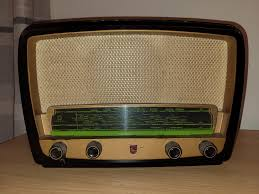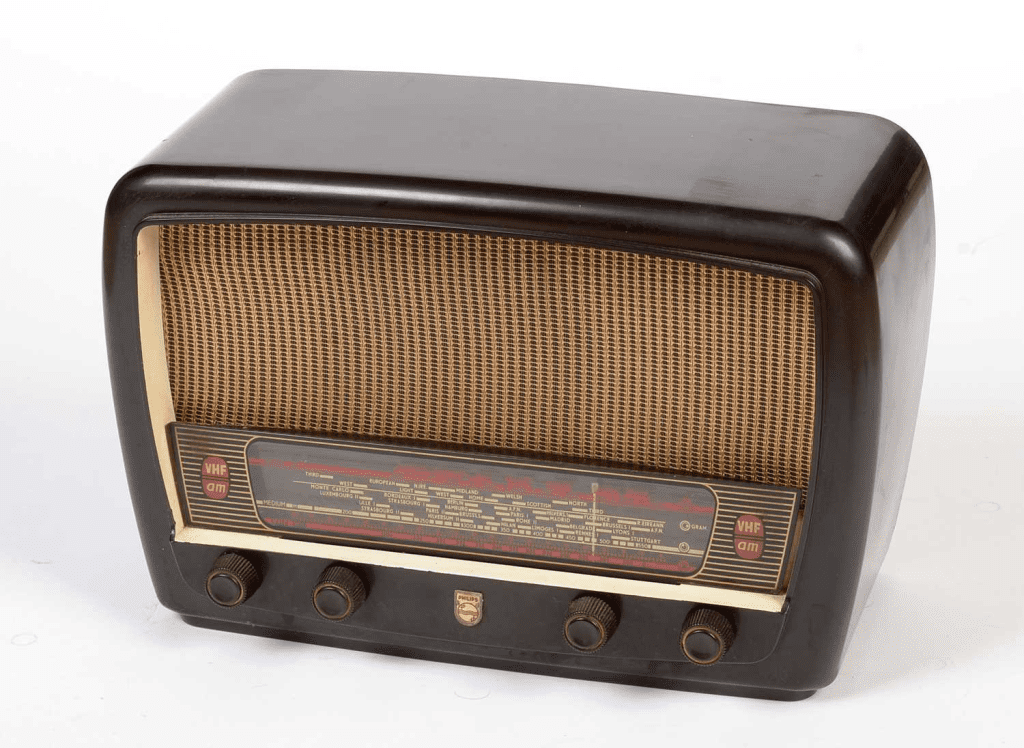In today’s world of digital streaming, Bluetooth speakers, and wireless sound systems, it’s easy to forget just how far audio technology has come. But if you grew up in the 1940s or 50s, or if you’re a vintage audio enthusiast, you might instantly recognize a radiogram—a beautiful combination of a radio and record player housed in an elegant wooden cabinet.
This wasn’t just a music player; it was a piece of furniture, a centerpiece of the home, and a symbol of technological sophistication in its era. With thermionic valves (vacuum tubes) providing rich, warm sound, the radiogram was the heart of the living room, bringing families together for music, news, and entertainment.
Let’s dive into the history, technology, and nostalgia of the classic radiogram, a forgotten gem that still holds a special place in the hearts of those who remember its magic.

What Is a Radiogram? A Blast from the Past
A radiogram (or radio-gramophone) was a high-end audio system of its time, combining a valve radio and a turntable into one beautifully crafted wooden cabinet. Unlike today’s compact speakers, these units were substantial pieces of furniture, often made from mahogany, walnut, or teak, giving them a luxurious and timeless look.
🔹 Key Features of a Radiogram:
- Built-in AM/FM radio – Some models included shortwave bands for international broadcasts.
- Turntable for playing 78 RPM records – Later models supported 33 ⅓ and 45 RPM vinyl records.
- Thermionic valve (vacuum tube) amplification – Provided deep, warm, and smooth audio.
- Large internal speakers – Designed to fill a room with immersive sound.
- Elegant wooden cabinetry – Often handcrafted with ornate details and polished finishes.
For many households in the late 1940s and 50s, a radiogram was a prized possession, combining style, entertainment, and cutting-edge technology of the time.
The Heart of the Sound: Thermionic Valves (Vacuum Tubes)
One of the defining characteristics of a classic radiogram was its thermionic valve (vacuum tube) amplification system.
💡 How Did Vacuum Tubes Work?
- These glass tubes controlled electronic signals by allowing current to flow through heated filaments.
- Unlike modern transistor-based amplifiers, valve amplifiers produced a rich, natural tone with a signature mellow warmth.
- The sound output was closer to the frequency range of the human ear, making music and radio broadcasts sound more lifelike.
📻 Common Valve Types Found in Radiograms:
- Triodes – Used in early-stage amplification for delicate sound details.
- Pentodes (such as EL34) – Provided powerful audio output, making radiograms ideal for home listening without distortion.
This unique, smooth sound quality is why audiophiles and vintage collectors still appreciate valve-based audio equipment today.

The Turntable: The Golden Age of Vinyl
Radiograms typically featured a turntable made by brands like Collaro or Pye, which were leaders in early vinyl playback technology.
🎶 How Records Were Played on a Radiogram:
- Early radiograms were designed for 78 RPM shellac records, which were thicker and more fragile than later vinyl discs.
- As technology advanced, some models supported 33 ⅓ RPM (LP) and 45 RPM (singles), allowing users to enjoy modern vinyl records.
- The tonearms often had ceramic or crystal cartridges, which picked up sound vibrations with a warm and full-bodied tone.
This system allowed people to play their favorite music at home, long before the era of cassette tapes, CDs, or digital streaming.
Why Did Radiograms Disappear? The Shift to Modern Audio
By the 1960s and 70s, technology was changing fast. Radiograms, once considered high-end home entertainment systems, started to fade away for several reasons:
📻 The Rise of Compact Transistor Radios
- Smaller, portable transistor radios replaced bulky valve-based units.
- People preferred lightweight, battery-operated devices over large furniture-like sound systems.
🎧 The Popularity of Hi-Fi Stereo Systems
- Dedicated stereo amplifiers with detachable speakers became the new standard.
- Hi-Fi (high-fidelity) systems offered better sound separation and more advanced features.
💾 The Evolution of Music Formats
- The shift from vinyl records to cassette tapes and CDs meant that built-in turntables were no longer practical.
- Compact, modular audio systems became more desirable.
By the 1980s, radiograms had become a thing of the past, replaced by modern sound systems and digital technology.
The Radiogram Revival: Why Collectors Still Love Them
Despite being a forgotten piece of technology, radiograms have made a small comeback among vintage enthusiasts and collectors.
🔹 Why Are People Still Interested in Radiograms?
✔️ Authentic Sound Quality – The warm, natural tone of valve amplifiers is still unmatched.
✔️ Retro Aesthetic Appeal – These beautiful wooden cabinets make stunning decor pieces.
✔️ Restoration Projects – Some audio lovers restore vintage radiograms for modern use, fitting them with Bluetooth adapters and upgraded speakers.
Many collectors hunt for well-preserved radiograms at estate sales, auctions, and antique stores, appreciating them not just as audio devices, but as historical artifacts of a bygone era.
Final Thoughts: A Nostalgic Piece of Audio History
If you remember using a radiogram, you’re part of a special generation that experienced the golden age of vacuum tube sound, hand-crafted audio equipment, and a time when music was an event, not just background noise.
Radiograms were more than just music players—they were family entertainment hubs, bringing people together for news, live broadcasts, and music sessions that filled the home with warmth.
While they may have disappeared from mainstream use, their legacy lives on in the hearts of those who appreciate true vintage sound.
So, if you ever come across one of these elegant wooden cabinets, take a moment to appreciate its craftsmanship and history. Because if you recognize it, you’re one of the lucky ones who remembers a time when music wasn’t just heard—it was experienced. 🎶